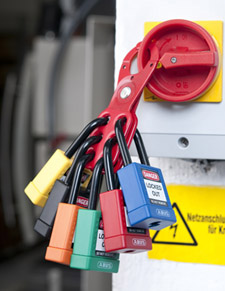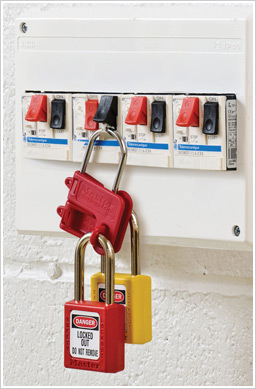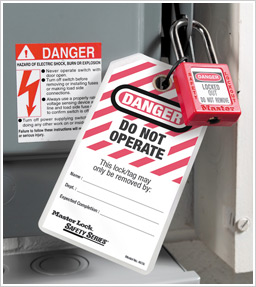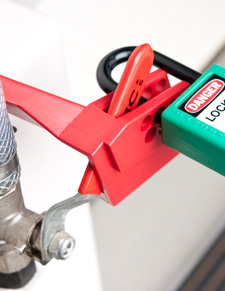Lockout-Tagout (LOTO) systems are critical safety measures in industrial environments, ensuring employee protection during maintenance activities. One key component of a Lockout/Tagout system is the use of Lockout/Tagout keyed-alike padlocks. These specially designed padlocks help isolate hazardous energy sources and prevent accidental machine operation during repairs. In this article, we will explore the significance of Lockout Tagout keyed alike padlocks, their benefits, and why businesses must invest in robust, well-manufactured options for hazard prevention and OSHA compliance.

More for Warning Rather Than Security
While padlocks are often associated with security, the primary function of Lockout Tagout keyed alike padlocks is hazard prevention. These padlocks act as a warning to individuals working with or near machinery, ensuring they understand that a device is under maintenance or repair. The key difference between regular security padlocks and LOTO padlocks lies in their intended use: LOTO padlocks are not primarily designed to secure valuable items, but to secure dangerous machinery and prevent accidents, injuries, and fatalities.
In environments where hazardous energy sources—such as electricity, gas, or steam—are present, Lockout Tagout procedures are essential. The padlocks used in these systems are part of a broader strategy to isolate energy sources and prevent inadvertent operation of machinery, thereby safeguarding employee safety.

People Picking the Wrong Padlocks for Their Particular Application – Manufacturing/Dangerous Sites
Selecting the right padlock is crucial for any business seeking to maintain a secure environment. Unfortunately, many companies make the mistake of using inappropriate padlocks for Lockout Tagout applications. For example, choosing regular keyed padlocks or non-compliant options can result in vulnerabilities that undermine safety protocols.
Manufacturing sites and other hazardous environments require specific types of Lockout/Tagout padlocks. Padlocks used for LOTO should be identifiable, durable, and able to withstand harsh conditions, including extreme temperatures, corrosive substances, and physical wear. Furthermore, OSHA (Occupational Safety and Health Administration) standards require the use of padlocks as part of an effective energy isolation plan to prevent workplace injuries. The right padlock ensures compliance with these regulations, fostering a safer work environment.
Oversights on Future Developments Across Multiple Sites Needing Padlocks
Another common pitfall is overlooking future scalability when selecting lockout/tagout keyed-alike padlocks. Businesses with multiple sites or expansion plans should consider a padlock plan that accommodates various locations, each with its own energy isolation requirements. An effective padlock plan is not static; it must be adaptable to future developments, including the addition of new equipment, machines, or energy sources that require isolation.
Keyed alike padlocks are particularly useful in these situations. When multiple sites need to implement Lockout-Tagout protocols, having keyed-alike padlocks allows a single key to work across all locks, simplifying the process and ensuring consistency across the business. This eliminates the need for different keys at various locations, which can create unnecessary complexity and increase the risk of safety breaches.

Investing in Comprehensive, Robust, Well-Manufactured Keyed Alike Padlocks
One of the most important investments a company can make in terms of workplace safety is selecting robust, well-manufactured Lockout Tagout keyed alike padlocks. These padlocks must meet stringent industrial standards to ensure reliability. The manufacturing process should include durable materials capable of withstanding the elements, such as rust-resistant coatings and reinforced shackles, to prevent tampering.
Investing in high-quality keyed-alike padlocks ensures that each lock can withstand the demands of a busy industrial setting. A comprehensive padlock plan also involves regular maintenance and checks to ensure that locks remain functional and compliant with OSHA guidelines. Furthermore, by investing in quality padlocks, businesses can reduce the likelihood of accidents and avoid costly legal repercussions associated with non-compliance.

Preventive Action Rather Than a Security Mechanism
While Lockout Tagout keyed alike padlocks are often mistaken for security devices, their proper function is preventive. In high-risk environments, a proactive approach to safety is essential. Rather than being reactive after an accident occurs, these padlocks are part of a strategy to prevent accidents from happening in the first place.
Energy isolation is the key principle behind Lockout Tagout procedures. By isolating energy sources with keyed alike padlocks, businesses prevent machines from being accidentally activated while they are being serviced. This is especially critical in environments where equipment can cause severe harm to workers, including factories, construction sites, and power plants.

Lockout Tagout procedures, including the use of keyed alike padlocks, form part of a broader hazard prevention strategy that helps businesses comply with safety regulations, reduce accidents, and protect employees.
Conclusion
Lockout Tagout keyed alike padlocks are an essential part of workplace safety, particularly in industrial environments where hazardous energy sources pose significant risks. Investing in high-quality, compliant padlocks ensures employee safety, maintains OSHA and HSE (Health and Safety Executive) standards, and helps businesses avoid the severe consequences of accidents and non-compliance.
A well-implemented padlock plan, including the use of keyed alike padlocks, simplifies safety protocols and makes energy isolation across multiple sites easier and more consistent. By prioritising hazard prevention over security and investing in robust padlocks, companies can create safer workplaces that protect their most valuable asset: their employees.
Key Takeaways:
- Employee safety is enhanced through the use of Lockout Tagout keyed alike padlocks, designed for energy isolation.
- Compliance with OSHA and HSE standards is ensured when appropriate padlocks are selected for industrial applications.
- Keyed alike padlocks offer scalability for businesses with multiple sites, allowing consistent safety measures across locations.